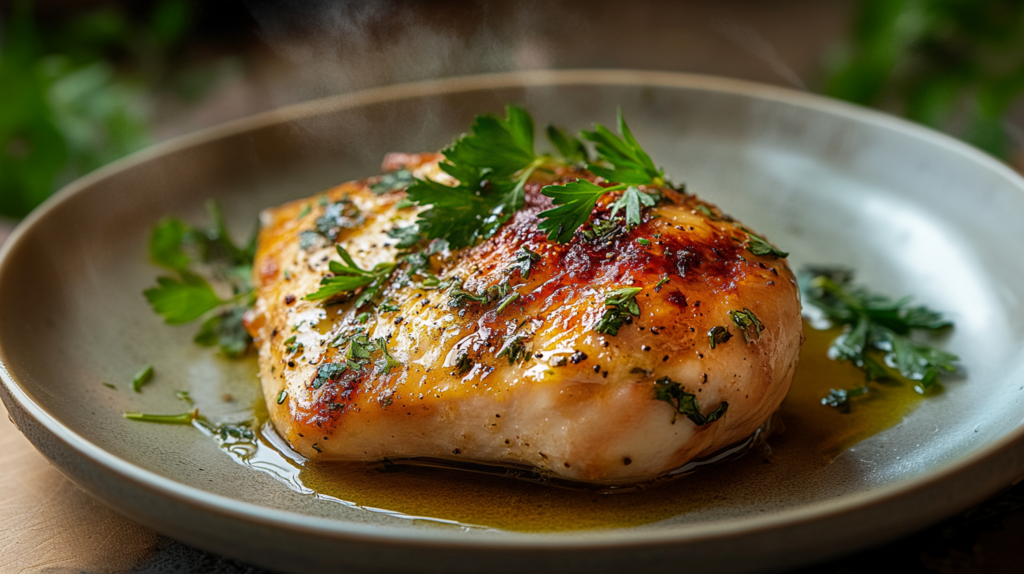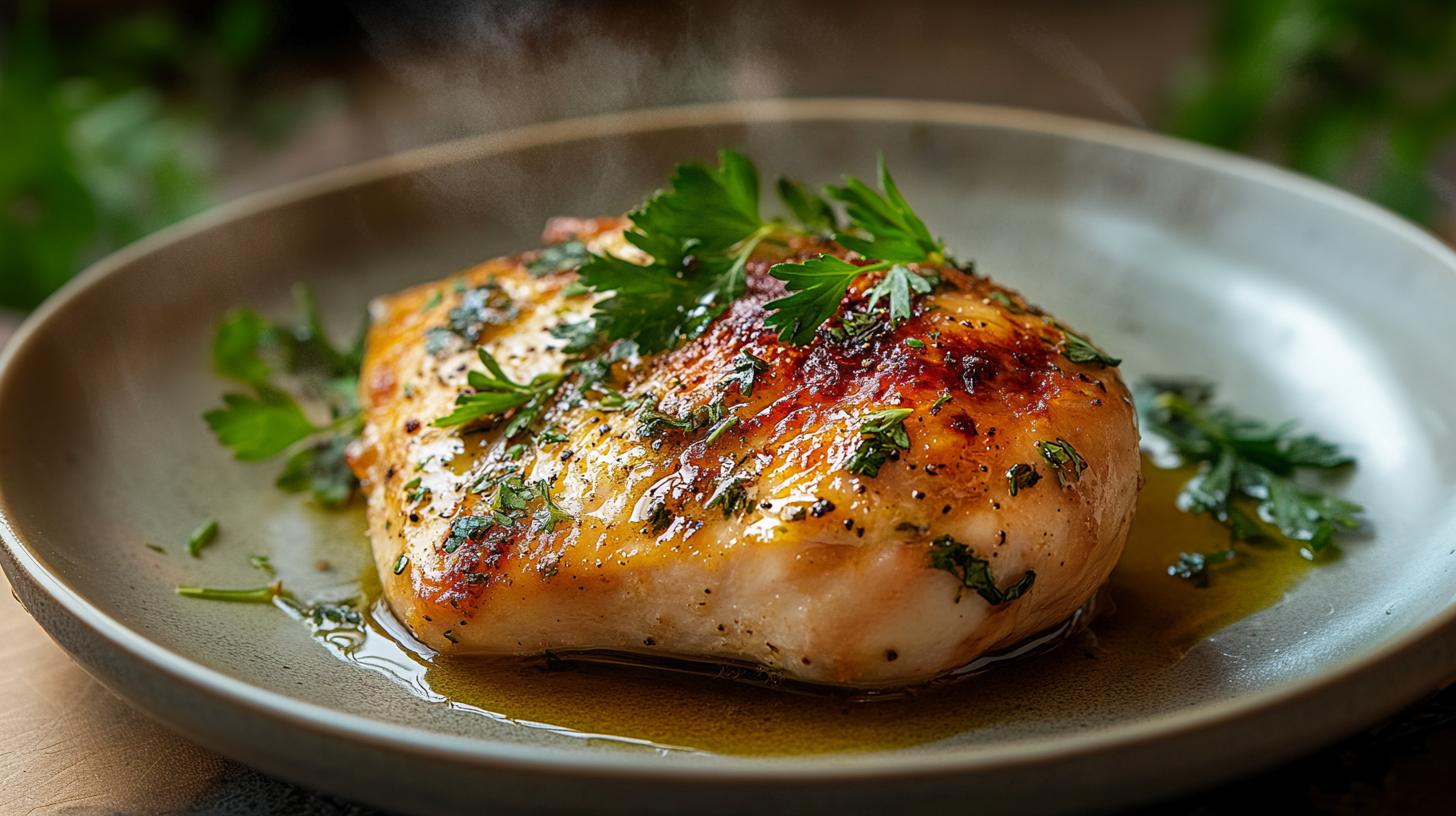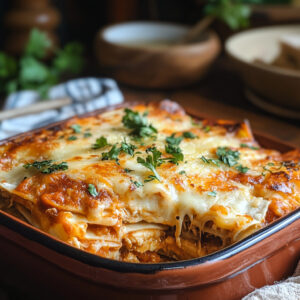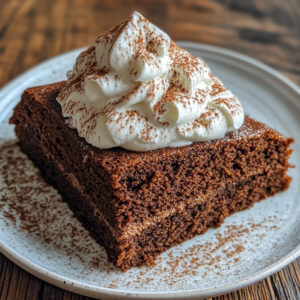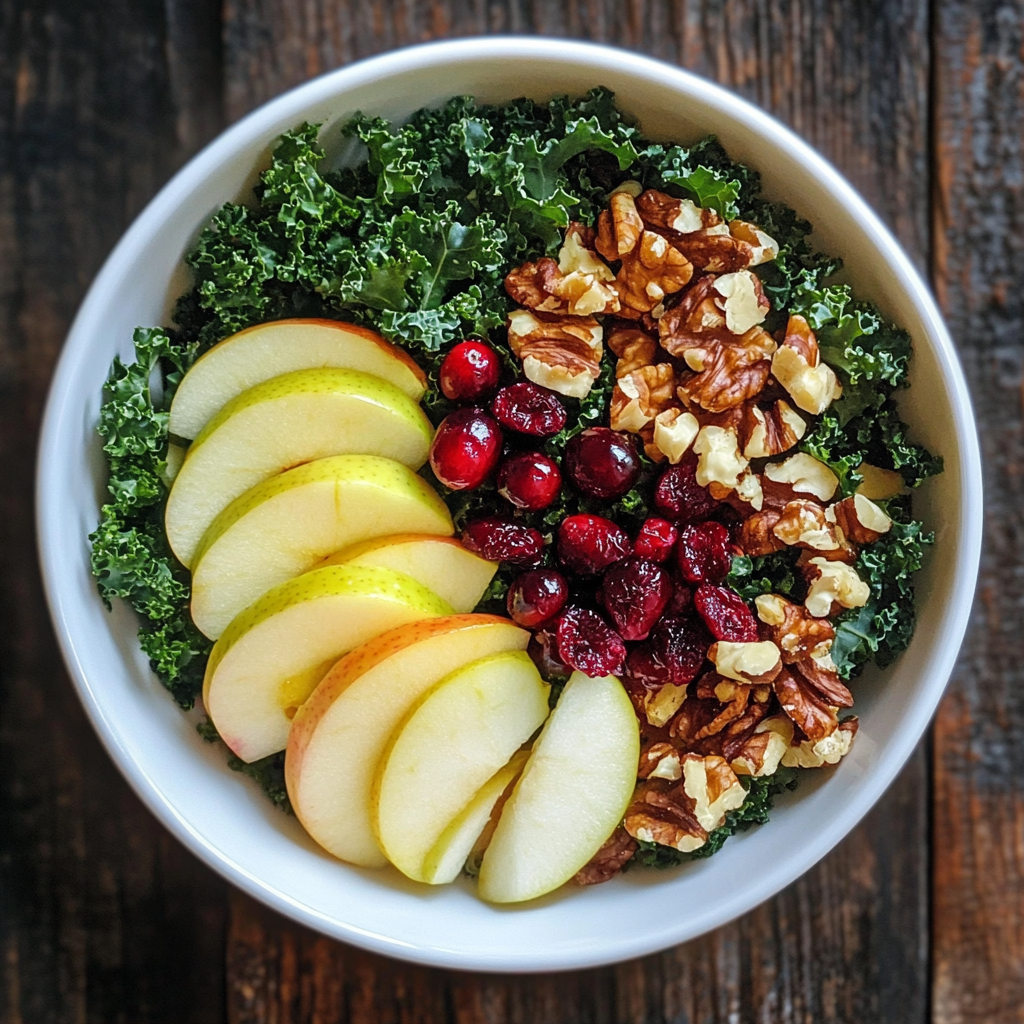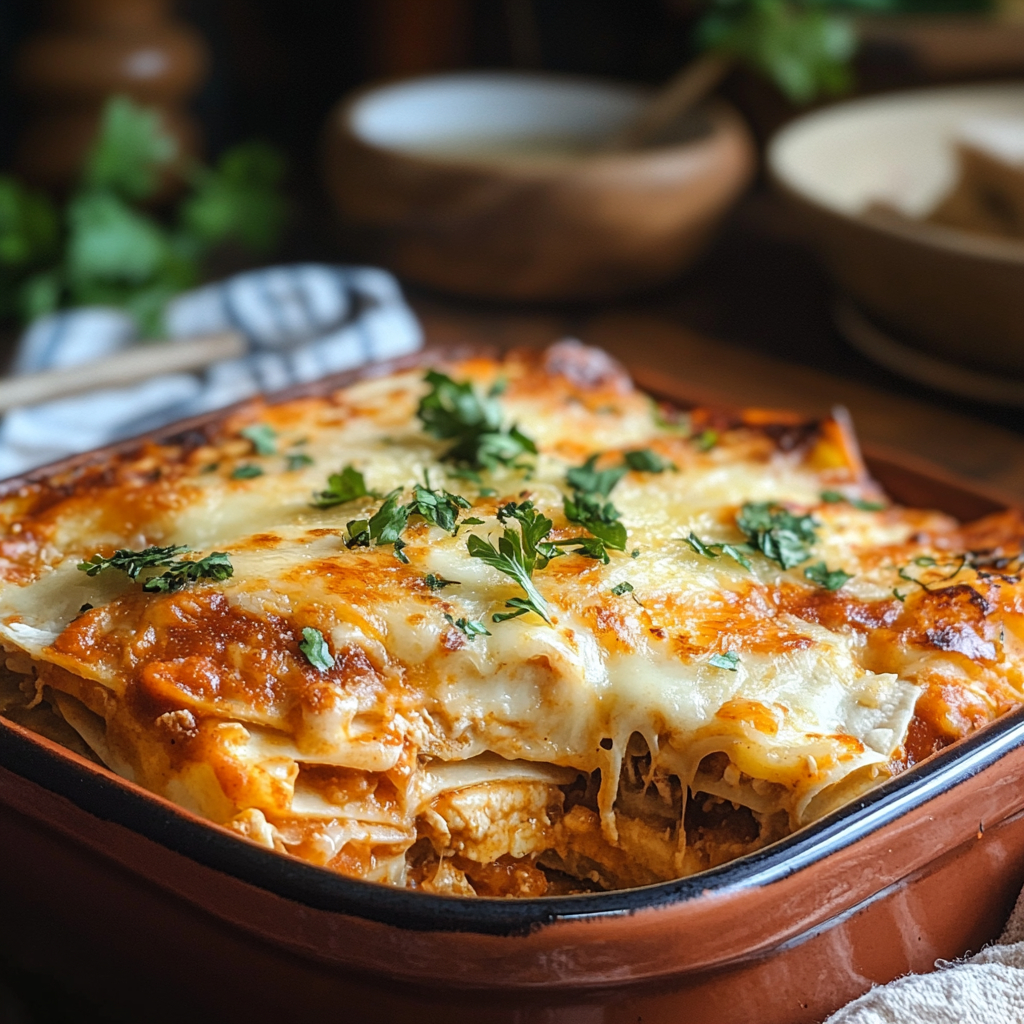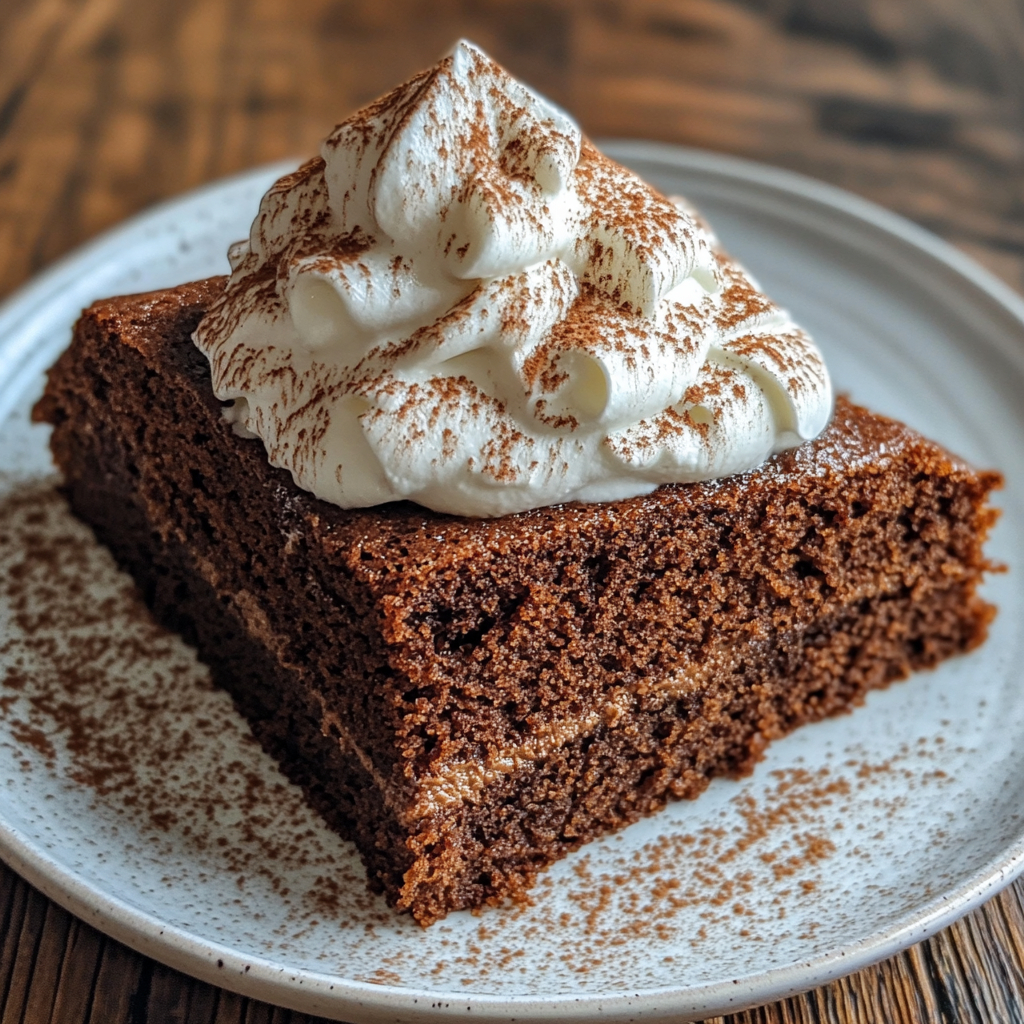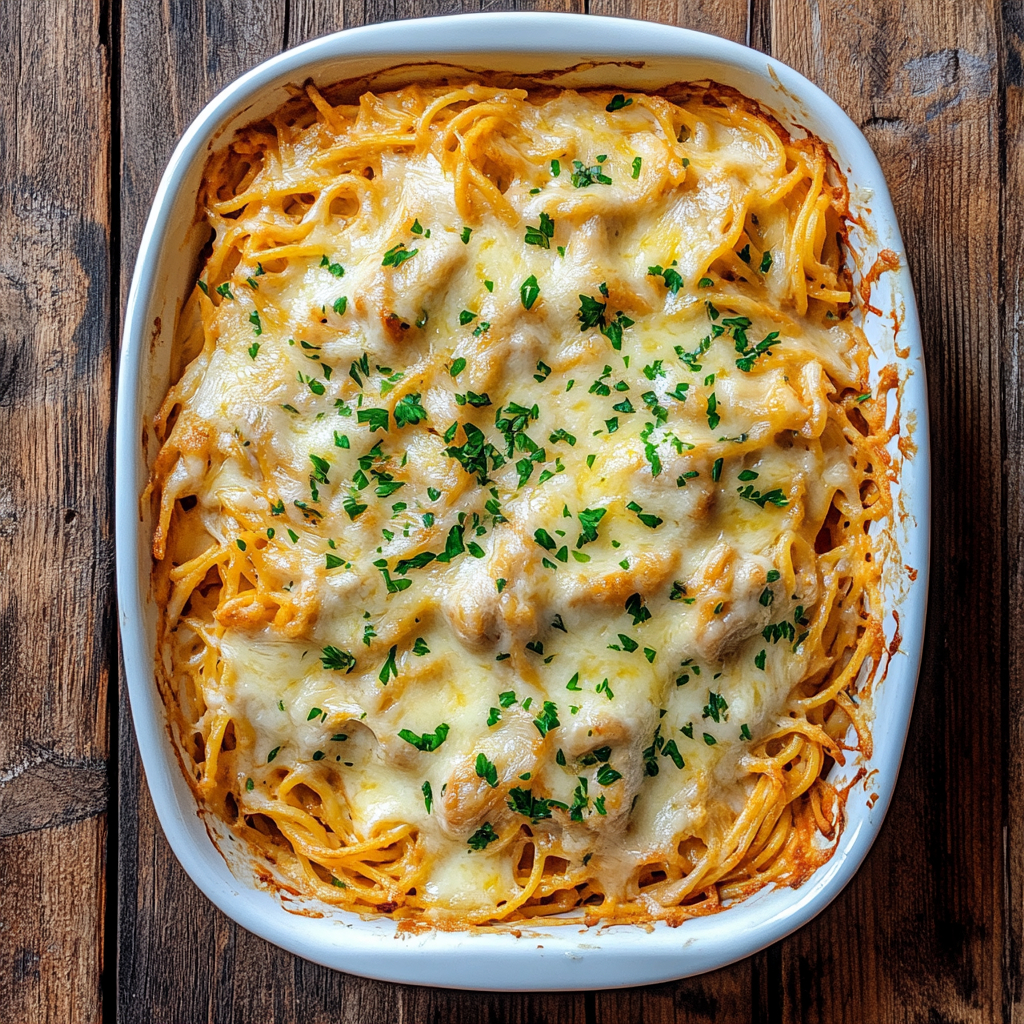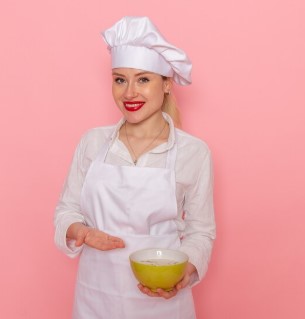INTRODUCTION
Do you bake chicken breasts covered or uncovered? It’s a simple question with surprisingly big results in your kitchen. Whether you’re baking for a weeknight dinner or prepping for meal plans, how you cook chicken breast affects everything—texture, moisture, flavor, and even nutrition.
In this article, we’ll answer in detail: Do you bake chicken breasts covered or uncovered? We’ll explain when to use foil, how oven heat impacts tenderness, and which temperature brings out the best in your bird. You’ll also learn how to keep chicken from drying out and get two easy recipe styles — one covered, one uncovered.
Looking for inspiration? Try our baked sweet potato and chicken breast recipe — a healthy and hearty meal that pairs perfectly with your favorite chicken-baking method.
Let’s get started by breaking down the basics behind this common cooking question: Do you bake chicken breasts covered or uncovered?
Understanding the Basics of Baking Chicken Breasts
What Does “Covered” or “Uncovered” Mean When Baking Chicken?
So, do you bake chicken breasts covered or uncovered? First, let’s clarify what each option actually means. Baking covered means placing chicken in a foil wrap, lidded pan, or baking dish with a sealed top. This method traps steam, creating a moist, enclosed environment that keeps the meat juicy.
On the other hand, baking uncovered leaves the chicken exposed to dry oven heat. This allows for browning and caramelization but can risk drying out the chicken if not carefully managed.
Many cooks wonder: Should I bake chicken breasts covered or uncovered for better results? The answer depends on what you’re going for—maximum moisture or a crispy texture.
| Method | Covered or Uncovered | Result |
|---|---|---|
| Wrapped tightly in foil | Covered | Steamed and ultra-juicy chicken breasts |
| Covered casserole dish | Covered | Moist, tender meat without drying out |
| Sheet pan or oven rack | Uncovered | Roasted texture with potential for golden crust |
| Covered after baking (rest) | Covered (tenting) | Locks in juices as chicken cools and sets |
In short, if you’re focused on tenderness, you might prefer to bake chicken breasts covered. But if you want a golden exterior, baking uncovered is the way to go.
Different Methods of Baking Chicken Breast in the Oven
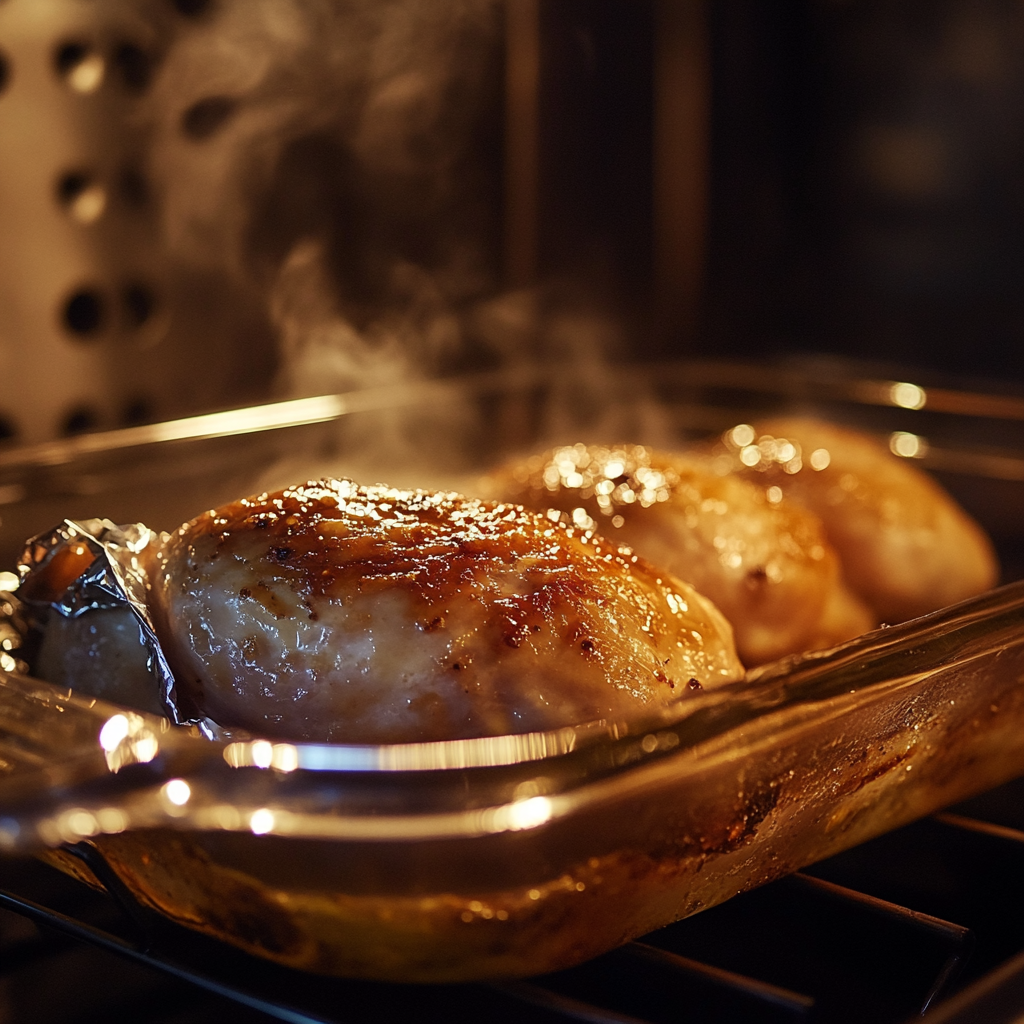
There’s no single right way to bake a chicken breast. Still, depending on whether you want a soft, moist cut or a browned and flavorful bite, your baking method matters.
Here are the most popular methods used by home cooks when debating: Do you bake chicken breasts covered or uncovered?
- Foil-Wrapped Chicken Breasts: This method is best for retaining natural juices. It’s ideal for lean meats like chicken breast that dry out easily.
- Glass Dish with Lid: This acts like a mini-oven inside your oven, circulating steam and cooking chicken evenly.
- Uncovered on a Baking Sheet: Perfect for roasting or flavor crusts. Great for adding herbs, spices, or breadcrumbs that need direct heat.
- Tenting with Foil After Baking: Keeps the chicken warm while redistributing juices, enhancing tenderness.
If you’re still wondering, Do you bake chicken breasts covered or uncovered for meal prep?—covered baking is usually better for reheating and storing.
Want to try a balanced one-pan dinner? Don’t miss our easy chicken and sweet potato tray bake—it’s healthy, satisfying, and made in the same oven.
The Science Behind Moisture and Heat Retention
How Covering Affects Moisture in Chicken
One of the main concerns when baking chicken is moisture. Chicken breasts are naturally lean, which means they can dry out easily. When you bake chicken breasts covered, you’re creating a moisture-sealed environment.
Covering your dish with foil or a lid traps the steam released by the chicken as it cooks. This steam forms a mini sauna inside your baking dish, which surrounds the meat with moist heat. As a result:
- The chicken stays juicier
- It cooks more evenly
- You lose less natural flavor
So, do you bake chicken breasts covered or uncovered for more moisture? Covered wins here. It’s like cooking in its own juice—ideal if you want soft, tender meat without drying it out.
Check out this article about baking covered chicken for more expert insights on why moisture matters.
How Heat Circulation Changes When Baking Uncovered
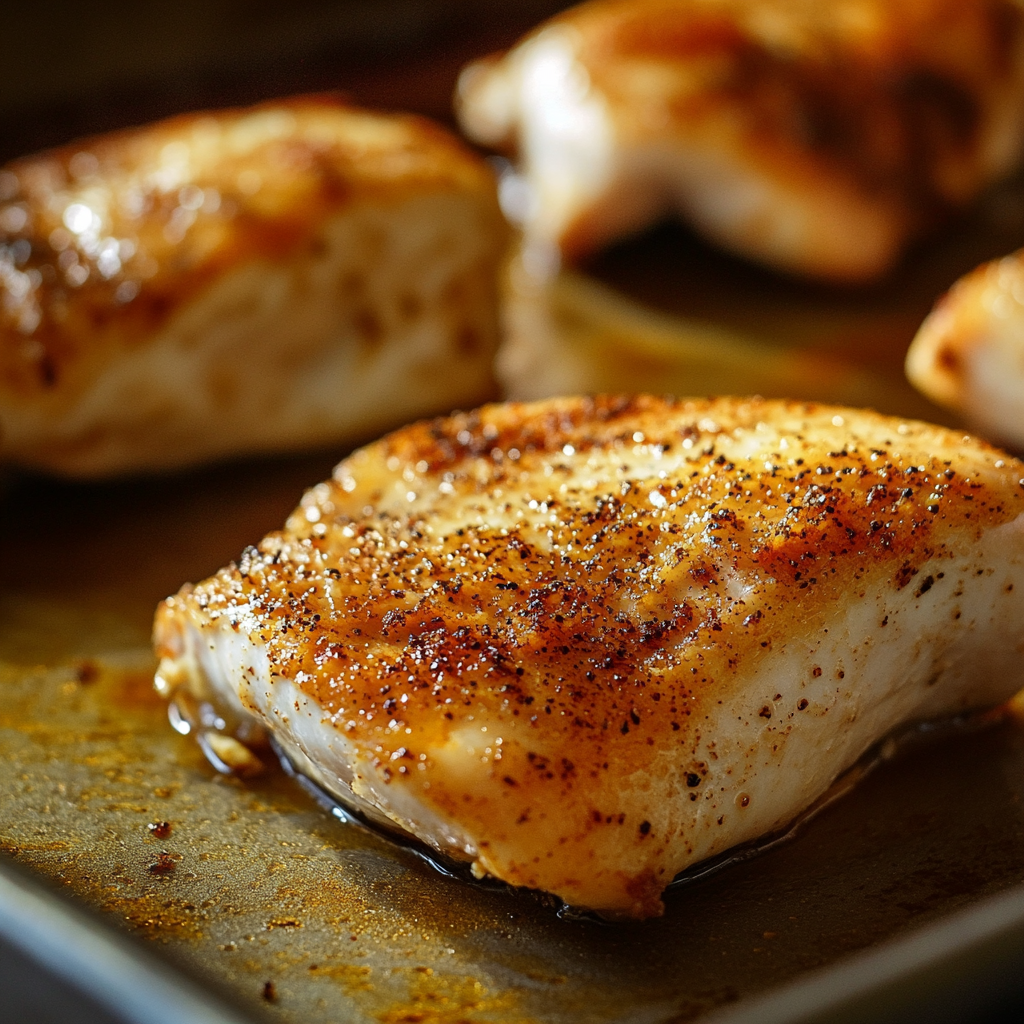
Baking chicken breasts uncovered introduces a completely different heat dynamic. Here’s what happens:
- Dry heat from the oven surrounds the meat directly.
- It allows browning and caramelization on the surface.
- It speeds up water loss, which can lead to drier meat if overcooked.
While baking uncovered helps build flavor through the Maillard reaction (that golden crust we all love), it also increases the risk of turning a tender chicken breast into a chewy disaster.
This is why many home cooks often ask, “Should you bake chicken breasts covered or uncovered to keep them juicy?” If your goal is maximum tenderness, covering is the safer bet. However, for those who love texture and slight crisp, baking uncovered—with close monitoring—can be rewarding.
Let’s break it down even further:
| Baking Style | Moisture Retention | Surface Texture | Best For |
|---|---|---|---|
| Covered | High | Soft and juicy | Tender, moist chicken without a crust |
| Uncovered | Low to Medium | Lightly crisped | Flavorful exterior, slight crunch |
So when it comes to do you bake chicken breasts covered or uncovered for better texture, the answer depends on what kind of bite you prefer. Covered keeps it tender. Uncovered adds a golden finish.
Want a recipe that balances both? Check out our chicken and sweet potato dinner ideas that include both covered and uncovered steps for the perfect texture.
When to Bake Chicken Breasts Covered
Scenarios Where Covering Chicken Is Best
So, when exactly should you bake chicken breasts covered? The answer depends on your goal: are you trying to lock in juiciness or build a crisp finish?
If your priority is moisture and tenderness, covering is the way to go. Here’s when you should definitely use foil or a lid:
- Lean Cuts Like Boneless, Skinless Breasts
These cuts dry out fast, especially in high heat. Covering helps prevent that. - No Sauce or Liquid in the Dish
If your chicken is baking solo, without broth or marinade, covering it traps the natural juices. - Reheating or Meal Prep
Want to keep your chicken soft for later meals? Bake covered so it stores and reheats without turning rubbery. - Cooking with Vegetables
Covering allows flavors to meld and steam together. For example, when baking with sweet potatoes or carrots, covering helps everything cook evenly and stay moist.
So, do you bake chicken breasts covered or uncovered when cooking without added fat or sauce? You’re better off covered.
Don’t miss our nutritious chicken and sweet potato recipe — it’s a great example of when covered baking shines for flavor and balance.
Types of Dishes That Benefit from Covered Baking
Some dishes are naturally suited for baking chicken breasts covered. These include:
- Casseroles or Bakes
Like a creamy chicken and rice bake or a loaded veggie tray, these recipes benefit from even, moist heat. - Marinated Chicken Dishes
Marinades do double duty — they flavor and tenderize. Covering helps the chicken absorb every drop. - Foil Pack Meals
Popular for camping or quick weeknights, foil pack chicken locks in herbs, spices, and liquids. - Low-Temperature Bakes (300–350°F)
If you’re using a slow and low oven approach, covering prevents the chicken from drying out during the long bake time.
For example, if you’re baking at 350°F and wondering do you bake chicken breasts covered or uncovered, the low temp signals you may want to go covered, especially if you’re using lean meat or dry seasoning.
Looking for creative ways to bake chicken with flavor-packed combos? Discover what sauces go best with chicken and sweet potatoes — covered baking helps those sauces really shine.
When to Bake Chicken Breasts Uncovered
Achieving a Crispier Texture Without a Lid or Foil
So, do you bake chicken breasts covered or uncovered when you want a golden top and caramelized flavor? Here’s your answer: go uncovered.
Baking chicken breasts uncovered exposes the meat directly to oven heat. This allows:
- Better browning through the Maillard reaction
- A lightly crisped surface
- Caramelized edges, especially when marinated or seasoned
This method works well for:
- Thin, evenly sized chicken breasts that cook fast
- Breaded or herbed chicken that benefits from direct heat
- Recipes calling for high-temp roasting (like 400°F or above)
For example, if you’re roasting chicken with a spice rub and want it to develop that golden finish, leaving it uncovered is ideal. It also gives your kitchen that irresistible baked chicken aroma we all love.
Need dinner ideas that use uncovered methods? Check out our delicious oven-roasted chicken and sweet potato recipes for bold, crispy results.
Roasting vs Baking: Differences That Matter
Many people use “roasting” and “baking” interchangeably, but when it comes to technique, there are some key differences that impact your choice to bake chicken breasts covered or uncovered.
| Factor | Roasting | Baking |
|---|---|---|
| Temperature | 400°F and above | 300–375°F |
| Pan Type | Open roasting pan or sheet tray | Baking dish, possibly with cover |
| Exposure | Always uncovered | Can be covered or uncovered |
| Best For | Crisp exterior, golden color | Juicy, moist interior |
If you’re aiming for baked chicken breasts with a roasted finish, go uncovered. This approach works best with skin-on breasts, thick cuts, or seasoned fillets that hold up under high heat.
However, keep an eye on your cook time. Even though do you bake chicken breasts covered or uncovered leans toward uncovered for crispiness, it also comes with a higher risk of overcooking if you’re not paying attention.
Need a tip? Use a meat thermometer. Once your chicken hits 165°F internally, it’s done — no guesswork needed.
The Best Temperature to Bake Chicken Breast: 350 or 400?
Comparing Cooking Times and Texture at 350°F vs 400°F
Once you’ve figured out do you bake chicken breasts covered or uncovered, the next question is: What temperature should you use?
Your choice between 350°F and 400°F can dramatically affect how your chicken breast turns out. And the right answer often depends on whether you’re baking covered or uncovered.
At 350°F, the slower, gentler heat is best when you bake chicken breasts covered. This temperature allows the meat to cook evenly while keeping it moist. The foil or lid traps steam and prevents the lean meat from drying out.
At 400°F, a higher heat works better when you bake chicken breasts uncovered. This allows the top of the chicken to brown, crisp up, and build flavor. The catch? You’ll need to monitor closely to avoid overcooking.
So, do you bake chicken breasts covered or uncovered at 350 or 400 degrees? If moisture is your goal, covered at 350°F is your go-to. If you want a golden finish, uncovered at 400°F gets the job done faster.
Here’s a quick reference:
| Temperature | Covered (Time) | Uncovered (Time) | Result |
|---|---|---|---|
| 350°F | 25–30 minutes | 30–35 minutes | Soft and moist (especially when covered) |
| 400°F | 20–25 minutes | 22–28 minutes | Crispier and more flavorful uncovered |
When thinking do you bake chicken breasts covered or uncovered for weeknight meals, this guide helps tailor your approach to your dinner goals.
Want inspiration? Try our baked chicken and sweet potato meals — they use smart timing and both cooking methods.
What Temperature Keeps Chicken Moist and Safe?
No matter if you bake chicken breasts covered or uncovered, always aim for an internal temp of 165°F (74°C). That’s the food-safe zone where chicken is done.
Still, how you get to that temp makes a difference. Cooking covered at 350°F offers a slower, more moisture-friendly path. Baking uncovered at 400°F creates faster results but can dry out the meat if you’re not careful.
So again — do you bake chicken breasts covered or uncovered when cooking at higher temps? If you’re going with 400°F, it’s often best to start uncovered for crispness, then cover it midway if the chicken looks like it’s drying out.
Here’s a golden rule:
- Covered = juicy, tender chicken
- Uncovered = crispier, bolder flavor
And if you’re serving with sauce or roasting veggies, baking uncovered at 400°F can enhance flavors through caramelization. Need ideas? Check out sauces that pair well with oven-baked chicken.
So, the next time someone asks do you bake chicken breasts covered or uncovered, you’ll know that temperature is just as important as foil.
Expert Tips to Keep Chicken Breast Moist
Prepping the Chicken: Brining, Marinating, and Pounding
Before even asking do you bake chicken breasts covered or uncovered, know this: the way you prepare the chicken before it goes in the oven is crucial for moisture.
Whether you’re baking covered or uncovered, these steps boost moisture and tenderness from the start.
1. Brining
Brining involves soaking chicken breasts in a saltwater solution for 15–60 minutes. It helps the meat absorb water and hold onto moisture during cooking. If you usually bake chicken breasts uncovered, brining is a must.
2. Marinating
Marinades add both flavor and moisture. A marinade with oil, acid (like lemon juice or vinegar), and seasonings creates a moisture barrier that helps prevent drying, especially when baking chicken breasts uncovered at higher temperatures.
3. Pounding to Even Thickness
Ever had chicken that’s dry on one side and raw on the other? That’s uneven cooking. Pounding the chicken to a uniform thickness ensures it bakes evenly whether you bake it covered or uncovered.
So, the next time you’re prepping for dinner and thinking, do you bake chicken breasts covered or uncovered, make sure your prep gives your chicken the best shot at staying juicy.
Using Foil, Broth, and Butter to Retain Juiciness
Once you’re ready to bake, it’s time to decide: Do you bake chicken breasts covered or uncovered to keep them juicy? Here’s where tools and ingredients help either method succeed.
Covering with Foil
When baking chicken breasts covered with foil, you’re trapping heat and steam inside the dish. This is excellent for keeping moisture locked in and avoiding dry meat — perfect for baking at 350°F. So if you’re unsure do you bake chicken breasts covered or uncovered for soft texture, foil is your friend.
Using Chicken Broth
Adding a small amount of broth to your baking dish creates a steam bath effect, keeping the chicken moist even when baked uncovered. It’s a great trick when you’re aiming for both a crisp top and juicy inside.
Topping with Butter or Olive Oil
Before placing the chicken in the oven, coat it with butter or olive oil. This adds flavor and a fat barrier to seal in natural juices. Whether you choose to bake covered or uncovered, this method works beautifully.
Still asking yourself do you bake chicken breasts covered or uncovered when meal prepping? In most cases, covered baking will yield better leftovers. The meat stays softer and reheats well.
For a full-flavored, moisture-rich meal, try our baked sweet potato and chicken breast combo. It’s a great example of using foil and natural juices to keep everything tender.
Using Tin Foil When Baking Chicken: Pros and Cons
Should You Always Use Foil? Pros for Tenderness
If you’ve been asking do you bake chicken breasts covered or uncovered, chances are you’ve thought about using foil. Aluminum foil is one of the most common kitchen tools when baking chicken — but is it always necessary?
Let’s start with the pros of using tin foil when baking chicken breasts:
- Locks in Moisture
Foil acts as a shield, creating a mini steam chamber. This makes baking chicken breasts covered one of the best ways to keep them juicy. - Even Cooking
When you bake chicken breasts covered with foil, it distributes heat more evenly. This prevents the edges from overcooking before the center is done. - Cleaner Pan
Foil-lined pans catch juices and sauces, which makes cleanup easier — a small win, but worth mentioning! - Great for Low-Fat Cooking
Want a healthier option? Covering your chicken with foil lets you bake without extra oil, keeping it light but still tender.
So, if you’re wondering do you bake chicken breasts covered or uncovered for maximum moisture, foil is often the answer.
Many of our recipes like chicken baked with sweet potatoes benefit from the foil method — perfect for retaining flavor and texture.
Why Foil Might Work Against Crispiness and Flavor
Now, let’s talk about the downsides of using foil — because yes, there are a few.
- No Browning or Crust
If your goal is crispy chicken, baking covered with foil may hold you back. The trapped steam prevents browning, so the surface stays soft instead of golden. - Soggy Toppings
Ever add breadcrumbs or cheese on top? Foil can steam them into a soggy mess. When baking chicken breasts uncovered, toppings stay dry and crisp up properly. - Delayed Caramelization
Caramelization adds flavor — especially when you’re using spices or marinades. Leaving the chicken uncovered allows that browning to happen naturally.
So, do you bake chicken breasts covered or uncovered when you’re aiming for texture and color? Definitely uncovered.
Want to balance both worlds? Try starting your chicken covered, then removing the foil for the last 10 minutes to crisp up the top. This hybrid method is ideal when you want juicy meat and golden skin.
For example, our uncovered chicken bake gives you that crusty finish while keeping the inside moist — the best of both methods.
How to Make Baked Chicken Breast Tender Every Time
Cooking Techniques for Soft, Juicy Chicken
Even if you’ve figured out whether to bake chicken breasts covered or uncovered, it won’t matter much if your chicken ends up rubbery or dry. That’s why mastering tenderness is just as important as deciding which method to use.
Here are some trusted tips to make sure your chicken turns out soft every single time:
1. Don’t Overcook It
Overcooking is the #1 reason chicken dries out. Whether you bake chicken breasts covered or uncovered, always use a meat thermometer to check for doneness. The magic number is 165°F — once your chicken hits that, pull it out immediately.
2. Let It Rest
Once it’s out of the oven, let the chicken breast rest for 5–10 minutes. This lets the juices redistribute inside the meat, keeping it moist. Cover it loosely with foil during this time, even if you baked it uncovered.
3. Slice Against the Grain
Cutting the chicken in the same direction as the muscle fibers can make it feel chewy. Instead, slice against the grain for a softer bite — it makes a real difference.
Still wondering do you bake chicken breasts covered or uncovered for the most tender result? If that’s your goal, covered baking — especially with a bit of broth or butter — usually wins. But even uncovered chicken can be tender with good timing and resting.
Resting, Slicing, and Serving: Small Details, Big Impact
It’s the little things that take your chicken from average to amazing. Once it’s cooked to perfection, these final steps can lock in that tender texture:
Rest It Right
Place the chicken on a plate or cutting board and loosely tent it with foil. This works whether you bake the chicken breasts covered or uncovered — just don’t skip the resting step. It helps the meat reabsorb its own juices.
Avoid Cutting Immediately
We get it — it smells amazing, and you want to dig in. But slicing too soon lets all those flavorful juices spill out. Wait, then slice.
Serve with Moisture-Boosters
Even if your chicken is baked uncovered, serving it with a sauce, gravy, or roasted veggies (like sweet potatoes) brings back that moisture on the plate. Explore our sauce pairing ideas here for inspiration.
Still asking do you bake chicken breasts covered or uncovered to get the best results? The truth is — both methods can deliver tender chicken. But these small steps after baking are what truly seal the deal.
Recipe Walkthrough – Baked Chicken Breast (With & Without Foil)
Still wondering do you bake chicken breasts covered or uncovered for the best results? Here’s your chance to try both and compare for yourself. These two easy recipes let you explore the covered vs. uncovered debate with no guesswork.
Step-by-Step Covered Baked Chicken Breast

This method is perfect when you want tender, juicy chicken every time — no crisping needed.
Ingredients:
- 2 boneless, skinless chicken breasts
- 1 tbsp olive oil
- 1 tsp garlic powder
- 1 tsp paprika
- ½ tsp salt
- ¼ tsp black pepper
- ¼ cup chicken broth (optional)
- Foil for covering
Instructions:
- Preheat oven to 350°F (175°C).
- Place chicken breasts in a baking dish.
- Rub with olive oil and season evenly with garlic powder, paprika, salt, and pepper.
- Pour broth into the bottom of the dish (optional but adds extra moisture).
- Cover the dish tightly with foil.
- Bake for 25–30 minutes, or until internal temp hits 165°F.
- Remove from oven and let rest, covered, for 5–10 minutes before slicing.
✅ This version is ideal for meal prep, reheating, and soft texture. So if you’re asking do you bake chicken breasts covered or uncovered when prepping ahead—this is your go-to.
Try serving it with our baked chicken and sweet potato recipes for a hearty, clean meal.
Step-by-Step Uncovered Baked Chicken Breast
Want that golden, slightly crisped edge? This one’s for you.
Ingredients:
- 2 boneless, skinless chicken breasts
- 1 tbsp melted butter
- 1 tsp Italian seasoning
- ½ tsp garlic salt
- ½ tsp onion powder
- Optional: sprinkle of grated Parmesan
Instructions:
- Preheat oven to 400°F (200°C).
- Line a baking sheet with parchment or foil.
- Pat chicken dry, then coat with melted butter.
- Season both sides with spices and optional Parmesan.
- Place chicken uncovered on the baking sheet.
- Bake for 22–28 minutes or until internal temp reaches 165°F.
- Remove from oven and let rest 5–10 minutes before serving.
FAQs: Do You Bake Chicken Breasts Covered or Uncovered?
1. Do you bake chicken breasts covered or uncovered?
It depends on the result you’re aiming for. If you want juicy, tender chicken that retains moisture, baking covered is the better option. However, if you prefer a golden top or slight crisp on your chicken, baking uncovered is ideal. Many home cooks even combine the two methods — starting covered, then removing the foil for the final 10 minutes.
2. How do you keep chicken breast moist when baking?
To keep chicken breasts moist in the oven, you can bake them covered with foil, add a splash of chicken broth, and bake at a lower temperature like 350°F. Prepping steps like brining, marinating, and brushing with oil or butter also help retain moisture — especially when baking uncovered.
3. Is it better to bake chicken at 350 or 400?
Both temperatures work, but the method changes. 350°F is better when baking covered, as the lower heat gently cooks the chicken and preserves moisture. 400°F is great for uncovered baking, helping to brown and crisp the exterior. Whichever you choose, aim for an internal temp of 165°F.
4. Should I use tin foil when baking a chicken breast?
Yes, especially if you want a soft, juicy texture. Foil traps heat and steam, making it easier to avoid drying out the meat. That said, if you’re looking for crispy, roasted edges, you may want to skip the foil and bake the chicken breasts uncovered. It comes back to your goal: do you bake chicken breasts covered or uncovered based on texture or tenderness?
5. How do I keep my chicken from drying out in the oven?
Cover it with foil, bake at 350°F, or use a marinade with oil to seal in moisture. Resting the chicken after baking also helps redistribute the juices. Whether you bake chicken breasts covered or uncovered, the key is not to overcook — use a thermometer to remove it right at 165°F.
6. How to make chicken breast tender?
Tender chicken breast starts with prep. Brine or marinate before baking, pound the meat to an even thickness, and don’t skip the resting step after baking. Baking covered works best for tenderness, but if you bake uncovered, keep the temp higher and the cooking time shorter.
Conclusion: So, Do You Bake Chicken Breasts Covered or Uncovered?
After going deep into oven temps, cooking methods, moisture retention, and recipe walkthroughs, it’s clear that the answer to do you bake chicken breasts covered or uncovered? is: it depends on your goal.
If you’re after soft, juicy, and forgiving results — especially for meal prep or family dinners — baking chicken breasts covered is the safest option. It traps steam, prevents drying out, and works best at lower temperatures like 350°F.
But if you’re chasing crispy edges, bold seasoning flavor, and that slightly roasted finish, baking uncovered at 400°F is your best bet — just keep a close eye on cooking time and temperature.
For the best of both worlds, many cooks start chicken breasts covered, then remove the foil for the last 10 minutes. This hybrid method delivers moisture and texture in one go.
No matter what side you choose in the covered vs. uncovered debate, always:
- Use a meat thermometer to hit 165°F
- Let your chicken rest after baking
- Try prep tricks like brining and buttering for maximum tenderness
And if you’re looking for recipe inspiration that uses both styles, don’t miss our top combinations like:
✓ Chicken and sweet potato oven bakes
✓ Sweet potatoes baked with chicken
✓ Sauce pairing guide for chicken
Whether you’re new to cooking or a weeknight warrior, knowing when to bake chicken breasts covered or uncovered is a simple step that makes a huge difference.
Can You Eat Chicken and Sweet Potatoes Together? A Perfect Nutritional Match
